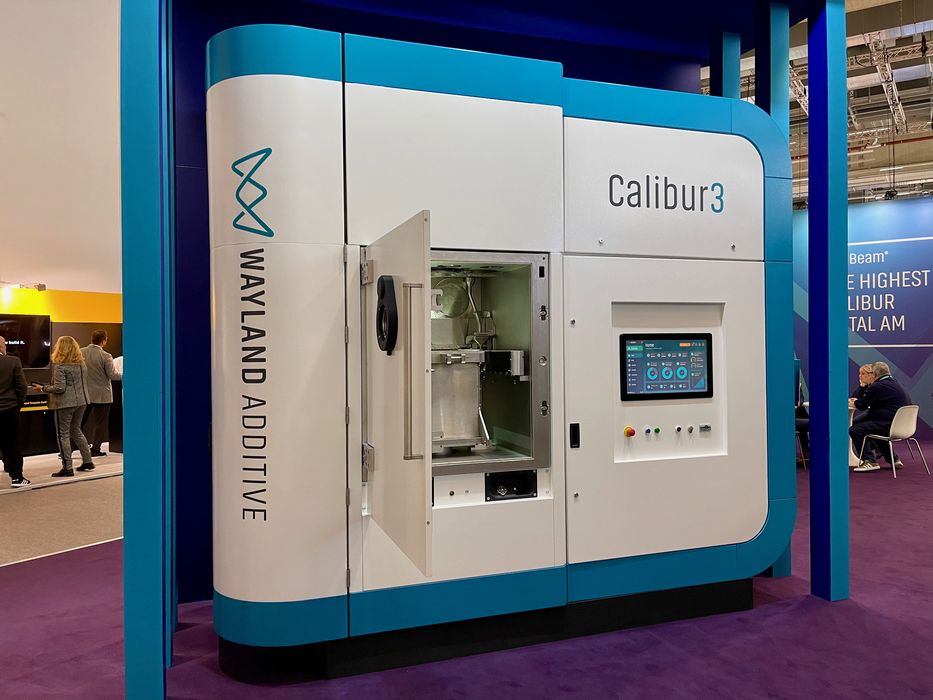
Wayland Additive is definitely not the biggest name in metal 3D printing, but they are growing strongly.
The UK-based company produces the Calibur3, a hefty machine capable of production metal objects in a variety of build volumes.
In fact, the machine has three different sizes of build chambers that are interchangeable:
- 100 x 100 x 150 mm
- 300 x 300 x 450 mm
- 450 x 450 x 450 mm
The smallest build volume would be used for development of materials and process parameters to avoid wasting larger amounts of expensive metal powder that would occur if using larger build volumes for such testing. That’s a very interesting feature that I don’t believe I’ve seen on other metal systems, although it does seem to exist on a few polymer machines.
The Calibur3 uses a technology they call “Neubeam”, which is a form of electron beam fusion. It’s a bit different because they use a “charge neutralization” process, which can overcome some of the limitations of traditional EBM metal 3D printing processes. They say the printing process is far more stable, resulting in higher quality prints.
The latest news from Wayland Additive is that they have seen significant demand for their products.
Wayland Additive’s Operations Manager, Dan Rushton, explained:
”We are having to cater for unprecedented demand for our ground-breaking metal AM technology at a time when industry globally is struggling with supply chain issues. We start from the position that all our operations need to be geared to customer satisfaction and the mitigation of risk, and so over the last period it has all been about ramping up production and placing orders for parts and components months and months in advance of when they will be needed. We have 6 machines in production right now catering for orders, and are pre-ordering enough components for a further 10 by the end of 2023, with plans for a further 24 in 2024 which will dramatically reduce the lead-times between customer interest and delivery. Effectively, on the continuum between ‘make to order’ and ‘buy off-the-shelf ‘we are moving significantly towards the latter, which should reduce order to delivery to a matter of a couple of months.”
That may not sound like a lot of machines, but remember that while some companies sell many units and make a low margin on each, others, like Wayland Additive, sell fewer units, but make more on each sale.
Apparently the demand at Wayland Additive is so high they are now quoting lead times of 18-24 months, which is quite a significant period. That said, the company is apparently working hard on improving their supply chains and improving their infrastructure to shorten delivery times. Wayland Additive hopes to open a new applications center and research & development center by 2025.
Having long order queues does introduce the risk that a prospect may decide to purchase an alternative product at an earlier date.
But that’s what happens when a company is successful: orders fly in and the issue becomes scaling, not machine development. It’s a good position to be in.
Via Wayland Additive

In 1943 I was taking an Mail Correstpondance Course on Guadalcanal called”Plastic Techknowlege” . A lecture for a lesson said “one of these days there would be a small machine that can make small parts for a machine gun in the field of battle. I said then “HOG WASH”. He was smart, I was a “doubting” Thomas.”. Boy was I wrong.